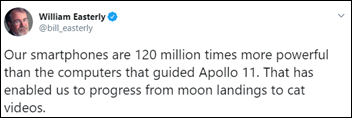Readers Write: EHR Vendor Priorities for Successful Innovation and Marketplace Development
EHR Vendor Priorities for Successful Innovation and Marketplace Development
By Seth Joseph
Seth Joseph, MBA is founder and managing director of Summit Health of Lincoln, RI.

With the release of the final interoperability and information blocking rules, one of the goals of the Office of the National Coordinator for Health IT is to establish an ecosystem of innovation. They mandate that electronic health records (EHR) vendors open up their APIs and effectively serve as the foundation — the platform — for marketplace development.
But when it comes developing an EHR-based marketplace for innovation, there are a host of challenges under the ONC’s latest guidance, from the short timeframe in which they are being asked to develop these marketplaces to a lack of experience in network development (i.e., growing sustainable, platform-based businesses).
With these challenges in mind, what can EHR vendors be doing now to ensure they are in the best position to develop a successful marketplace for innovation?
Establish sound (neutral) governance structures and processes
EHR vendors must carefully think through and give plenty of consideration to developing governance rules, standardizing the rules of engagement for platform development and the governance processes first, then creating documentation around it. Accounting for these fundamentals at the beginning will ensure that there’s a repeatable, scalable process when onboarding new developers to the platform.
For example, which developers are allowed on the EHR vendor’s platform and marketplace? How do they become certified? How can EHRs ensure that developers abide by all state and federal regulations regarding health data exchange and privacy and security, such as HIPAA?
There are also issues such as those that Amazon is facing in having to determine exactly if/what proprietary data can be used to compete with third-party app developers for the platform. What is allowed and how should the rules and regulations be managed?
The importance of having a strong governance process and operating guidelines becomes clear when considering the issue Apple faced in 2019 related to its app store search results. According to a New York Times analysis of six years of App Store user searches, Apple’s own apps ranked first in the results for at least 700 search terms in the store. That isn’t exactly a vote of confidence for third-party IOS app developers, or the kind of attention Apple wants on its marketplace.
While all of this due diligence will require legal, technical, and business development work, it’s a necessity, as marketplaces will not scale and networks cannot grow effectively without it.
Invest in support resources
Third-party developers will vary in their technical, business, and organizational maturity. From implementation support and technical resources to data management and standardization support, EHR vendors should invest in the necessary resources to ensure that marketplace vendors clearly understand the rules of the road and also are set up to do as well as possible.
Third-party developer success leads to marketplace success. While EHR vendors may not believe that marketplace success is important to their success in the short term, they would be wise to consider why Airbnb is among the most highly valued lodging businesses. It’s not because it runs a better hotel than Hilton or Marriott (it doesn’t), but because it allows hosts and renters to connect and transact on its platform.
Expectations and investment
Turning a software business into a platform business can be exciting and promising, but it’s important to temper expectations. For instance, while 2018 revenue from Salesforce.com’s third-party developer platform was the business’s highest growth area (41% annual growth rate), that only represents 20% of the organization’s revenue overall. That took over a decade to reach since Salesforce.com’s developer marketplace has been in existence since 2007.
It’s especially important for executives who are managing the marketplace to set realistic expectations internally regarding likely marketplace growth over the next 3-5-year period, then determine how much and what kinds of investments will be required to support that.
Bring in an unbiased, experienced marketplace manager
There are many reasons why EHR vendors are not in a great position to be managing platform-based marketplaces on their own, but all map back to their inexperience in network development.
For example, under the new rules, EHR vendors will have to respond to developer requests for access within 10 business days. How will those companies manage this process in appropriately screening for privacy, security, and technical concerns while also determining how to address developers who might compete with new functionality that the company itself is planning? How will the EHR vendor think about quality management, in terms of the impact of varying levels of developer and application quality and what that means to the EHR’s brand with its customers?
Growing a marketplace also requires redundant instances of technology and managing multiple integrations and different types of partner relationships at once. EHR vendors are inexperienced in and ill-equipped in these areas.
Given these challenges, EHR vendors should strongly consider outsourcing the management of their EHR marketplace to an entity that has the right experience and knowledge of standing up and supporting third-party developer marketplaces.
In fact, an effective marketplace manager that works with multiple EHR vendors should be able to deliver increasing value to each one of them by standardizing processes, refining implementation approaches, and managing multiple developer relationships. This is similar to the value they deliver to third-party developers by allowing them to connect once and gain access to multiple EHRs.
For EHR vendors, the innovation train is pulling up to their platform. While conditions might not be ideal since time is scarce and marketplace development in healthcare is still in its infancy, now is the time for EHR vendors to prepare and ensure that when that train reaches its destination, there is a solid foundation from which to grow as a marketplace innovator.


















RE: Change HC/RansomHub, now that the data is for sale, what is the federal govt. or DOD doing to protect…